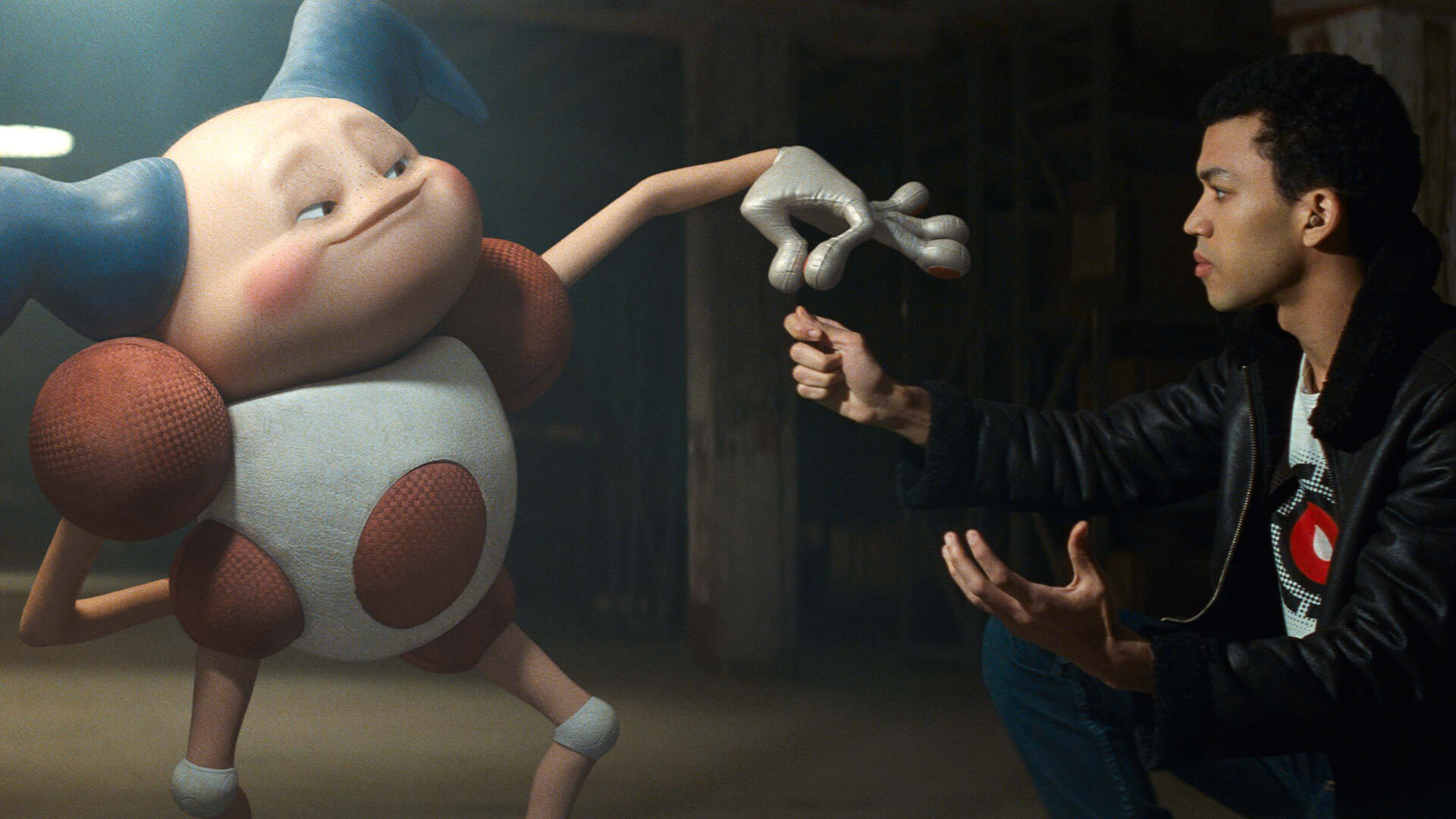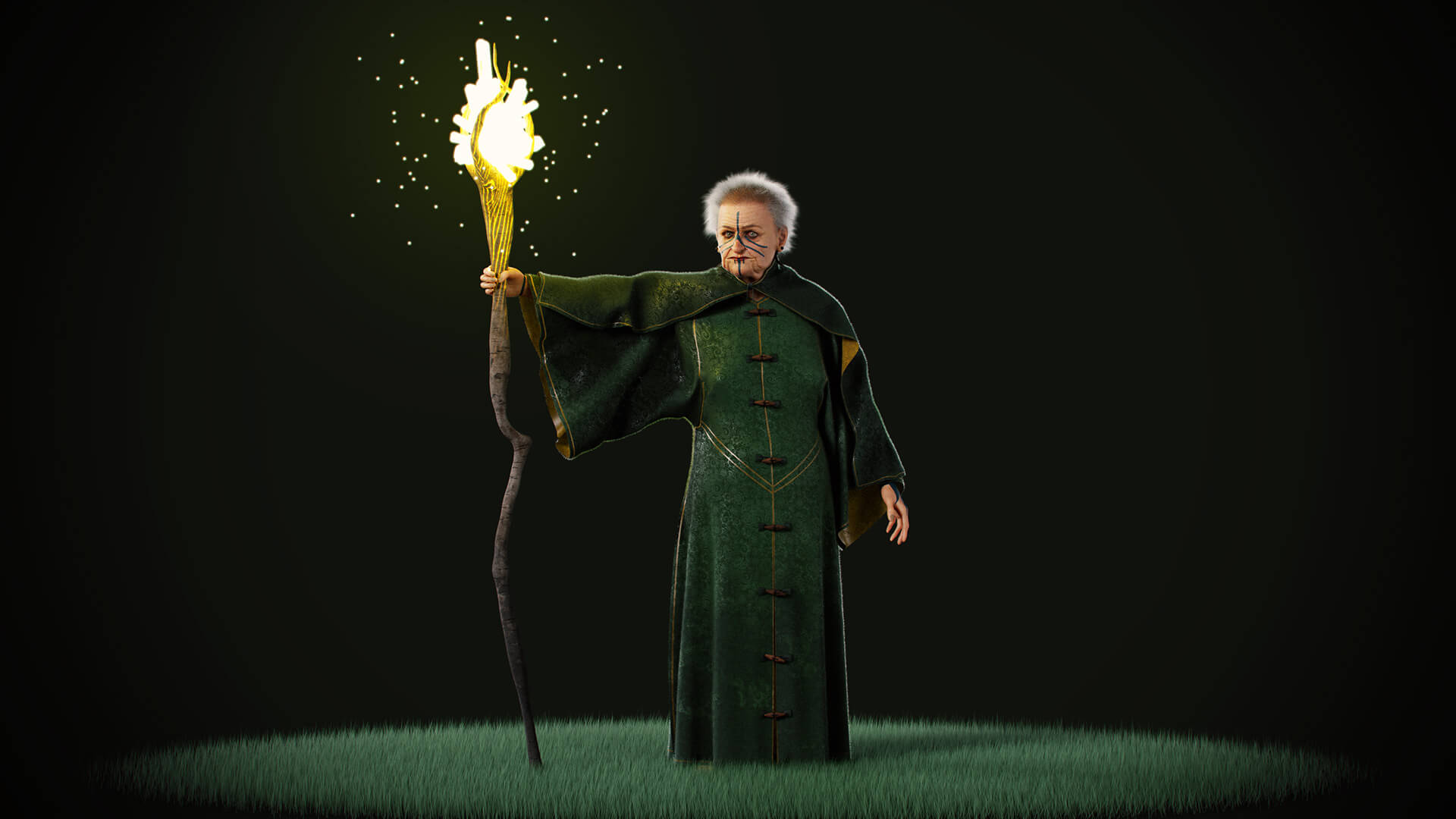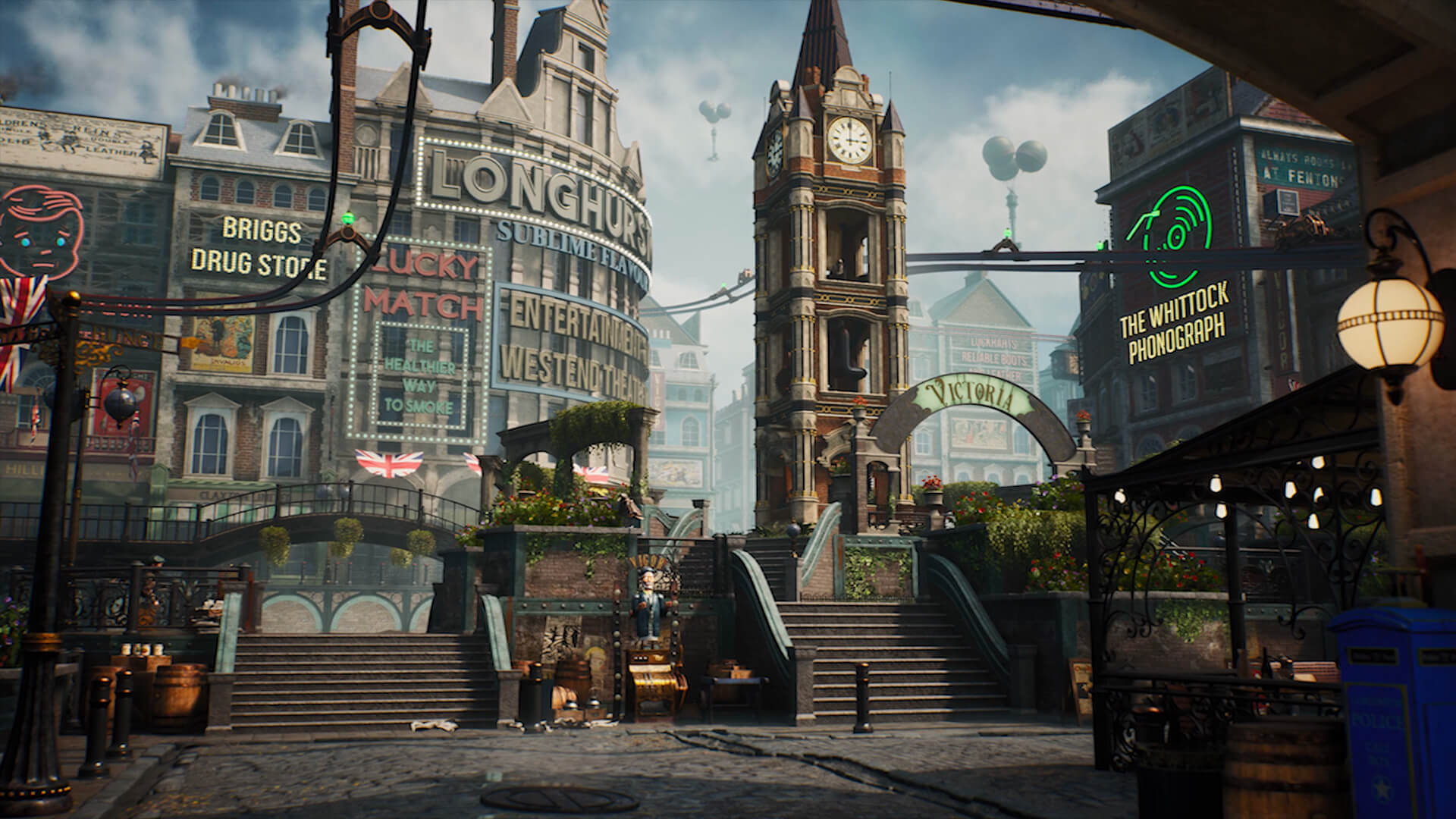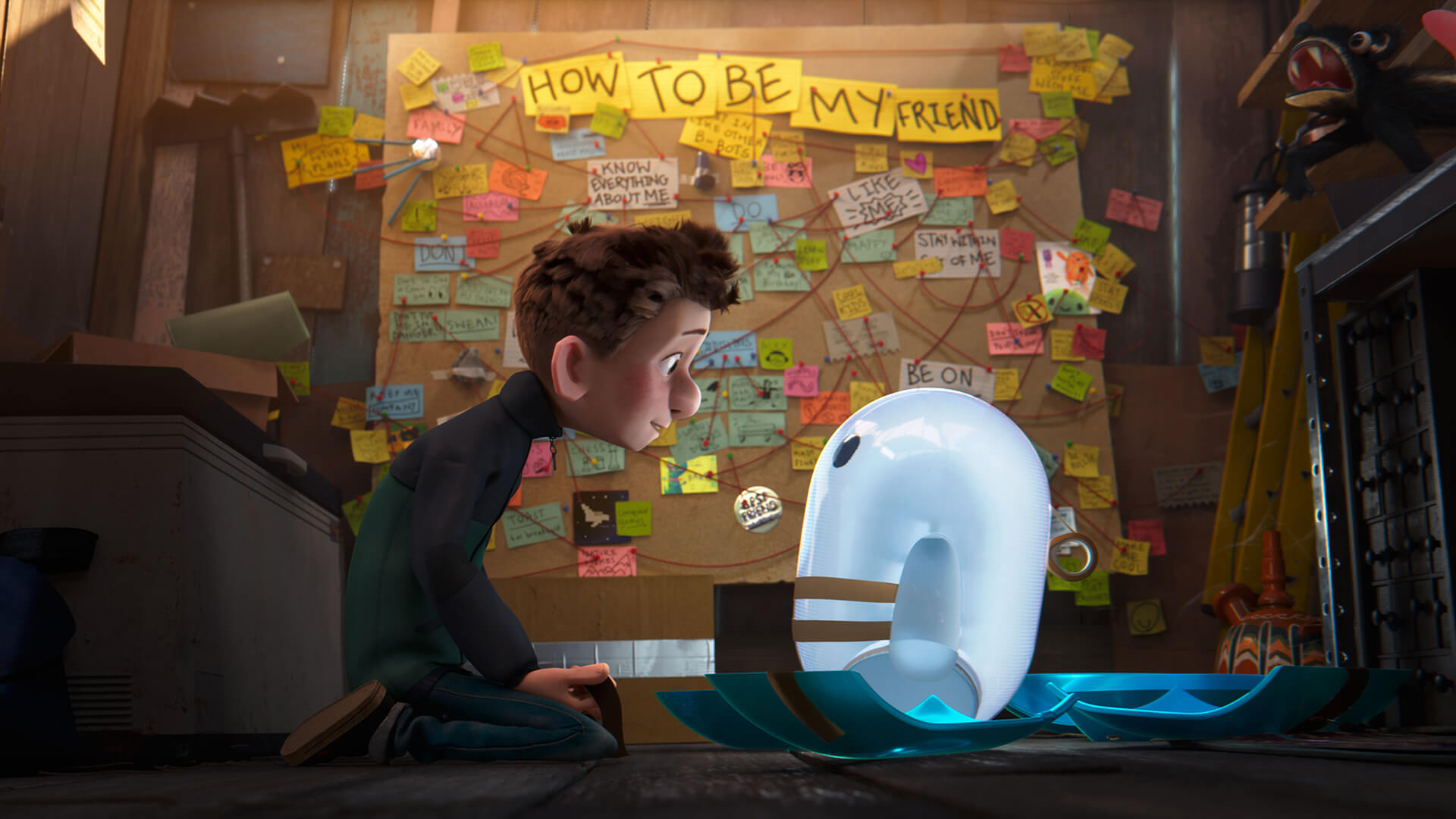Character creation (evening - online)
Character Creation (evening - online)
Course details
Location
Start date
5th May 2026
Duration
20 weeks
Contact Time
Tuesday and Thursday evenings: 6:30pm - 9:30pm GMT
Difficulty
Intermediate - requires a firm grasp of computer functionality
Fees
- £3,250 (for 2025 applications)
- £3,995 (new fees for 2026 applications)
Course overview
Visualise your own character designs and bring them to life.
Over 20 weeks of evening classes, you’ll get hands-on experience in design, modelling, texturing, rigging and animation, and you'll create your own character from concept to final render – a fantastic asset to add to your showreel.
This course will allow you to explore different character design techniques, create 3D models using Maya and ZBrush, and then paint and texture your character to give it a distinct look. This course is jam-packed but is designed for beginners – to take you through every stage of the process.
There will be a focus on creating characters for visual effects and video games, but the basics are the same for all types of characters, so don't let that put you off if you are looking for more traditional animation or motion picture character creation.
In addition to the soft skills that you will learn and enhance, working in a professional studio environment will give you the edge when applying for jobs in a highly competitive industry.
See also MA Character & Creature Creation and Character & Creature Creation short courses (14/21 weeks).
Why choose this course
- Industry briefs - work on industry-standard briefs and experience real-life scenarios, just like in a professional studio
- Professional input - our advisory board of experts, from the likes of DNEG (Fantastic Beasts and Stranger Things), Framestore (His Dark Materials, Thor: Love and Thunder), Rocksteady (Archam) and MPC (The Lion King, Pinocchio) help keep this course relevant
- Successful alumni - you'll join our community of thousands of Escapees, many of whom have gone on to work as Character Technical Directors at some of the world’s top studios including Framestore, MPC and Blacklist Creative
- Industry-standard facilities - study in a studio environment that mirrors current industry practice, using professional software such as Maya and ZBrush
- Fast-track learning - studying a short course allows you to learn new skills quickly, in a fast-paced environment, so you can start applying for jobs as soon as you’ve completed the programme
- Intensive training - we pack a lot into a few evening classes, and we recommend that you work outside of classes for an extra few hours per week to complete your assignments
- Flexibility - study live online and in the evening to fit the course around your professional and personal life and other commitments
- Strong portfolio - along with an Escape Studios Certificate of Completion, you'll leave with strong creative and technical skills and great pieces for your portfolio
- Small class sizes - a convivial environment allows students to assist and inspire one another and benefit from personalised feedback from tutors.
Course modules
Introduction to ZBrush: Interface and Tools
Week 1
- Navigating the interface, customising layouts, and learning hotkeys
- Exploring brushes, SubTools, and Dynamesh basics
- Understanding ZBrush workflows for concept versus production
Blocking Out Forms
Week 2
- Starting from primitives and combining shapes
- Using Dynamesh and ZRemesher to refine silhouettes
- Establishing proportion and shape
Anatomy (Skeletons)
Week 3
- Building skeletal structure as a foundation
- Studying bone landmarks for sculpting reference
- Blocking skeletal forms into character meshes
Anatomy (Muscles and Fat)
Week 4
- Understanding how muscle groups sit on top of the skeleton
- Sculpting natural transitions with fat and soft tissue
- Understanding surface anatomy for believable characters
Cloth Creation in Marvelous Designer
Week 5
- Setting up garment patterns and sewing in Marvelous Designer
- Simulating fabric drape and physics-based folds
- Exporting garments for refinement in ZBrush or Maya
Retopology
Week 6
- Understanding the purpose of clean topology
- Using ZRemesher for automatic clean-up
- Beginning manual retopology with Maya tools
Retopology (Continued)
Week 7
- Refining topology around joints and the face for deformation
- Maintaining consistent quad flow
- Checking and troubleshooting retopology in Maya
Asset Setup (UV and Shaders)
Week 8
- Introduction to UV mapping theory
- Creating UVs in Maya and organising shells
- Assigning placeholder shaders for testing
UVs and Pipeline Setup
Week 9
- Creating clean, production-ready UV layouts
- Setting up multi-tile UVs (UDIMs) for high-resolution texturing
- Organising assets with proper naming conventions and folders
Introduction to Mari
Week 10
- Importing assets into Mari and setting up projects
- Node-based painting workflow overview
- Painting large-scale textures across UDIMs
Texturing in Substance Painter
Week 11
- Setting up projects and baking mesh maps
- Using smart materials, masks, and layers for detailing
- Combining procedural and hand-painted textures
Painting Skin and Sculpting with Textures
Week 12
- Painting realistic skin tones and details in Mari or Substance
- Using texture-driven displacement and normal maps in ZBrush
- Blending sculpted and painted details
XGen and Houdini for Groom
Week 13
- Introduction to grooming with XGen in Maya
- Creating guide-based grooms in Houdini
- Exporting and preparing grooms for rendering
Introduction to Unreal
Week 14
- Setting up a new Unreal project and navigation basics
- Importing assets from Maya, ZBrush, or Substance
- Using Unreal for real-time look development
Shaders in Arnold and Unreal
Week 15
- Creating realistic shaders in Arnold (skin, metal, fabric)
- Setting up PBR materials in Unreal
- Linking texture maps to shader networks
Arnold Lighting
Week 16
- Overview of light types in Arnold
- Creating studio-style three-point lighting
- Adjusting exposure, shadows, and atmosphere
Arnold Rendering
Weeks 17
- Setting render quality and sampling controls
- Reducing noise with efficient settings
- Rendering high-quality stills and sequences
Unreal Lighting and Rendering
Week 18
- Setting up natural and cinematic lighting in Unreal
- Using post-process volumes for mood and grading
- Rendering sequences with the Movie Render Queue
Character Setup and Lighting (Turntables)
Week 19
- Creating turntable cameras in Maya and Unreal
- Setting up showcase lighting rigs for characters
- Rendering polished turntable animations
Project Week
Week 20
- Refining and finalising individual projects
- Peer and tutor troubleshooting sessions
- Preparing assets, renders, and turntables for presentation
More information
Entry requirements
Minimum requirements
We welcome and encourage applications from students with a variety of backgrounds, experiences and perspectives.
To study this short course, you must:
- Be over 18
- Have a good understanding of written and spoken English
- Have a firm grasp on computer functionality (aka. shortcuts, how a computer works, ability for minor independent trouble shooting if required and ability to adapt and learn new technology and software).
If you'd like to discuss your circumstances before applying, contact us!
Online study requirements
We can provide remote access to our workstations during teaching time. Due to availability restrictions, we highly advise you to have your own set up at home to study in your own time.
More things you’ll need:
- A strong internet connection
- Cloud storage or external hard drive to back up your work, 1TB+ recommended
- A three-button mouse or graphics tablet. Please note, the Wacom Intuos Pro range of tablets have the best support for our remote desktop software and provide the best experience.
- A computer microphone (and optionally a webcam)
- Note-taking materials.
If you have any questions about learning online or if you need help with what to buy, get in touch at hello@escapestudios.ac.uk.
How to apply
To apply, complete the relevant online application form below:
Our Admissions Team will get in touch to take you through the next steps.
If you have any questions about your application or our entry requirements, get in touch!
As part of the application process, you will need to agree to our terms and conditions for your place on the course to be secured.
Fees and funding
Fees
- £3,250 (for 2025 applications)
- £3,995 (new fee for 2026 applications)*
*To maintain the level of quality and industry relevance our students expect, evening - online course fees will be adjusted in 2026 to reflect current market conditions including operational costs and market rates for qualified tutors.
Payment plans
We offer payment plan options for all courses. Following an initial deposit at registration stage, your chosen payment plan will break down your remaining fees into up to three instalments, to be paid before the end of the course.
Visit our admissions page for any questions about fees, funding and payment plans.
Teaching and learning
We pack a lot into each class of our evening courses, to be able to offer a learning option that is more flexible and fits in with your personal and work life. This means that contact time with your tutors will be intense learning and hands on. To make the most of this course, we recommend that you spend at least 10 hours working on your projects or practising your new skills in your own time each week.
Software
- ZBrush is used to produce high quality characters and environmental assets by sculpting and adding details such as texture, dents and scratches. The mesh's polycount can be lowered for smoother handling when exported for animation or the game engine.
- Autodesk Maya is known as one of the most powerful 3D animation software products. Maya helps Animation Artists create realistic and stylised animation and offers high control over the kind of user interface and scripted controls you can create.
- Adobe Substance Painter is a 3D painting tool. Substance Painter's materials use physically based rendering to create realistic materials for 3D assets. Artists can paint quality details on their assets such as age, imperfections and decay.
- Adobe Photoshop is an image creation, graphic design and photo editing software developed by Adobe. It is considered one of the most popular tools for Digital Artists.
- Marvelous Designer is a used for creating 3D models of clothing and fabric simulations.
- Unreal Engine is an advanced real-time engine used to create games with physics, effects, animation, photorealistic rendering and more. With it's easy-to-use interface, Artists can create and control immersive games and interactive experiences.
- Houdini is primarily used for creating dynamic simulations and fluid-like effects, it also contains a modelling and texturing workflow. With a node-based workflow, Houdini makes it wasy to build tools from node trees and iterate changes as required by the client.
- Mari is a flexible and powerful 3D texturing application offering the ability to paint high-resolution texture detail directly onto complex 3D models with it's customisable tools and abiliy to work either layer-based or node-based.
- Autodesk Arnold is an advanced ray tracing renderer that is great at creating complex scenes with realistic lighting, shadows and visual effects.
Career opportunities
“Animation in the UK has a strong track record in character development and storytelling. It also leverages the UK’s global leadership in the artistic and technical aspects of the visual product.” (source Animation UK)
You’ll leave with an Escape Studios Certificate of Achievement, along with strong creative and technical skills and some great pieces of work for your portfolio. Ready to apply for jobs in the industry!
Some of the opportunities you can consider once you’ve finished your studies include:
- CG Generalist
- Character Artist
Our students have gone to work as both specialist and generalist artists in creative studios, across films, TV, games and visual effects. Read some of our Escapee success stories.
Check out our Careers Guide for more information about career opportunities and progression routes.
)
)
)
Meet our industry-experienced tutors
They all have industry experience and are experts in their fields, including certified trainers for Unreal Engine, Autodesk and Houdini. They've worked at studios such as Walt Disney, EA and Framestore, on credits including Doctor Strange, Kingsman and Bond: Spectre.







